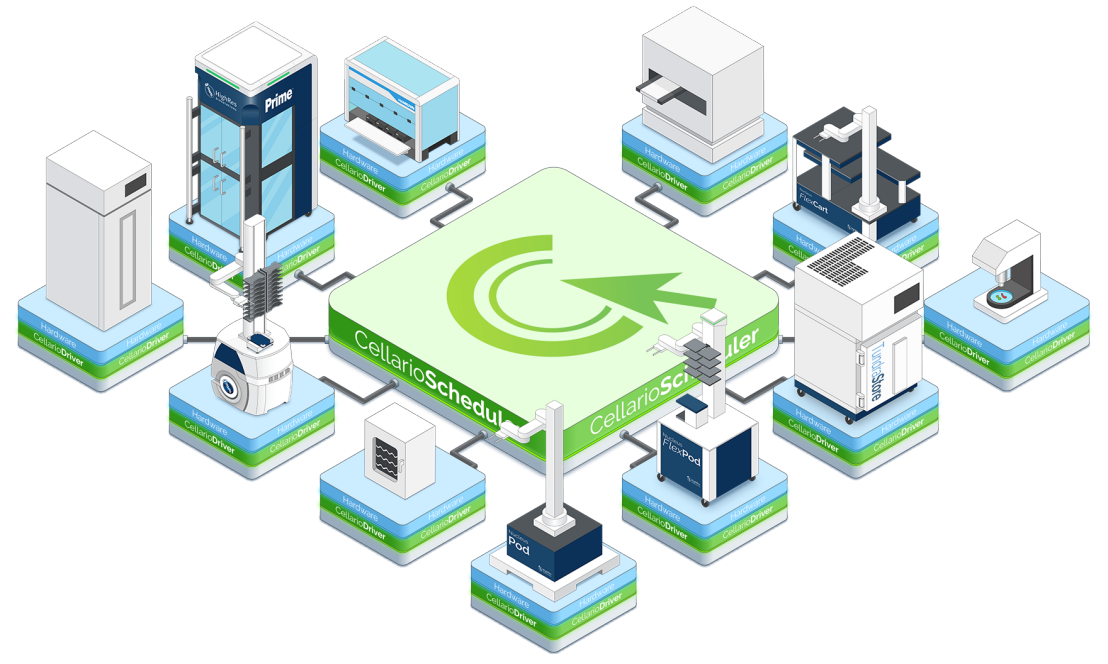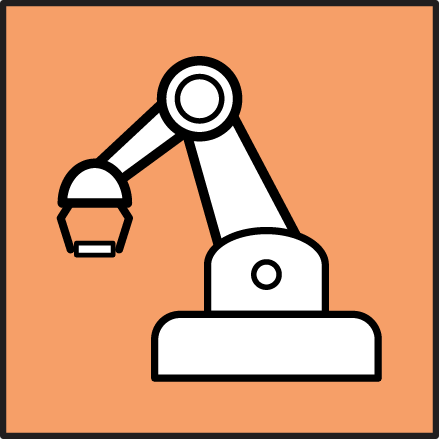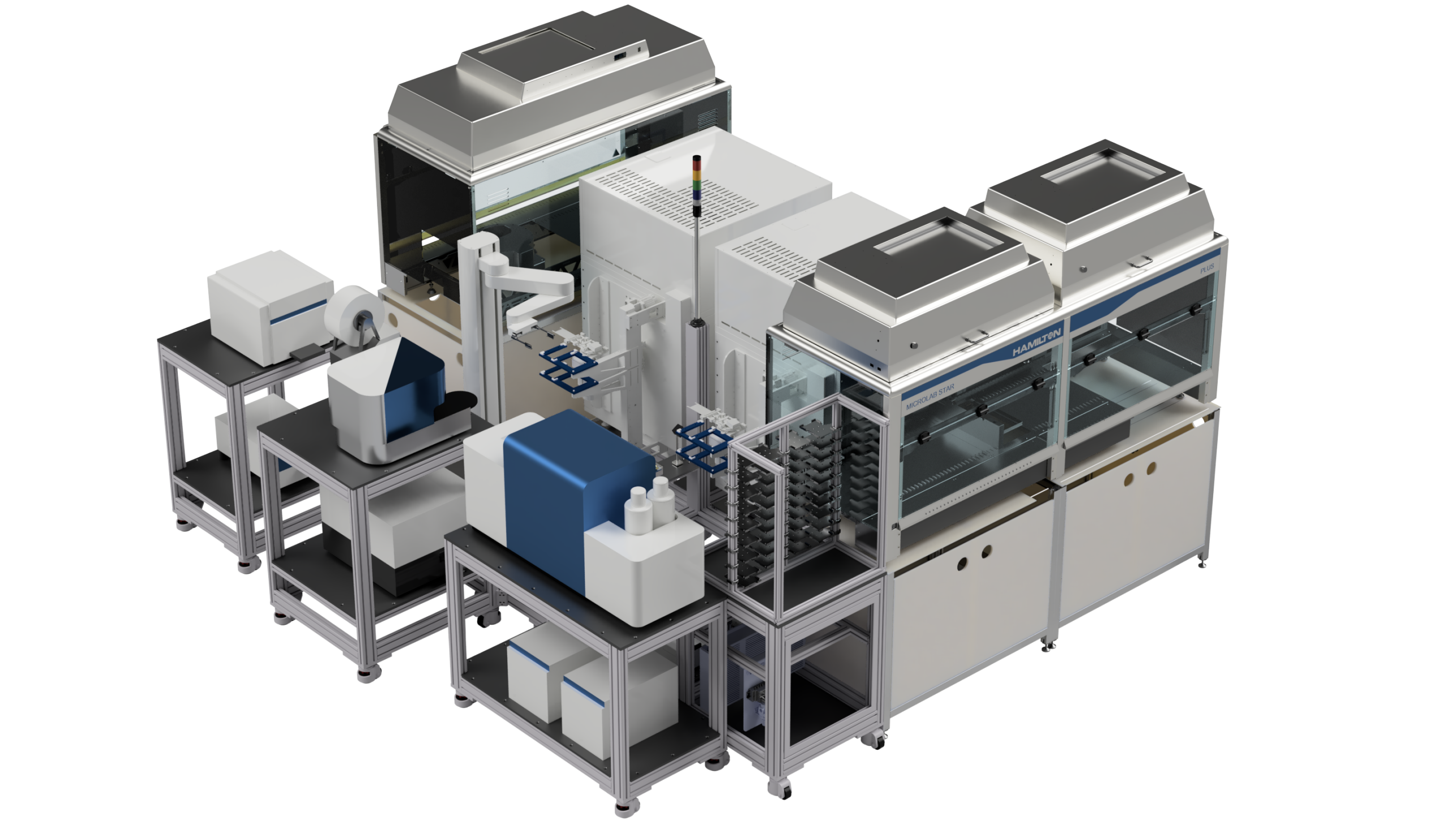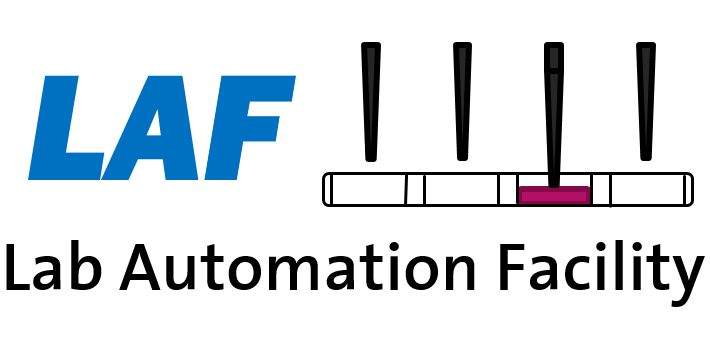Cell & Organoid System

Our cell and organoid culture automation lab specializes in mammalian cell cultivation, including organoid and tissue cultures. Utilizing state-of-the-art robotic systems, we automate essential processes such as routine maintenance, continuous monitoring, and precise manipulation of cultures over an extended period of time. This advanced automation streamlines workflows, ensures consistent and reproducible results, and reduces the risk of human error and contamination.
We have enclosed the whole automation system in a BSL-2 Compliant housing enabling it to handle BSL-2 samples and workflows.

In modern biological research, coordinating multiple automated devices is essential for efficient and accurate experimental workflows. Scheduling software, such as HighRes Biosolutions' CellarioScheduler, which we use in this lab, facilitates this integration by enabling scientists to design, execute, and monitor complex protocols across various laboratory instruments. These platforms allow for the seamless orchestration of tasks among devices like liquid handlers, plate readers, and incubators, ensuring synchronized operations and optimal resource utilization. This capability allows multiple users to run their workflows in parallel, interleaving tasks as needed. By employing such scheduling solutions, you can enhance throughput, maintain consistency, and reduce manual intervention, ultimately accelerating your research.
Workflows


Incubators and large liquid handling robots enable automated and continuous handling of mammalian cells in both adherent and suspension culture. Recurring maintenance tasks such as medium exchange and cell culture passage can be carried out on the pipetting platforms and can be scheduled in advance on Cellario. Suitable 2D/3D imaging modes [Link to Tecan Spark Cyto] with real-time computation and analysis (cell counting, confluency, fluorescence intensity, etc.) are available to monitor adherent cell cultures over time.
For more information, please visit our wiki.

This automation system is well-equipped for supporting the continuous maintenance of organoid and spheroid cultures over prolonged durations (over 6 months). Suitably customized pipetting liquid classes on the liquid handling robots allow for stress-free handling of organoids/spheroids during medium exchange tasks. A dedicated high-content confocal imaging platform enables periodic monitoring of cultures in 3D.
For more information, please visit our wiki.

The cell culture automation features a sophisticated plate reader designed to conduct time-lapse measurements of absorbance, fluorescence, or luminescence in mammalian cell cultures. It also integrates a basic imaging setup with on-board computation modules to quantify confluency, fluorescence levels, etc. of cells in real-time. A state-of-the-art high content imaging setup is also integrated enabling time-lapsed confocal 3D imaging of cell/organoid cultures.
For more information, please visit our wiki.

An integrated flow-cytometer in the automation system uniquely enables the monitoring of cell suspension cultures. The liquid handling robots can be set to prepare aliquots of cell cultures under maintenance workflow, which is then handed over to the flow-cytometer for cytometric analysis.
For more information, please visit our wiki.

The fully-featured two liquid handling robots allow for the implementation of assays involving multi-well repetitive pipetting.
- Immunostaining / Destaining assay
- Dose response pipetting
For more information, please visit our wiki.
Integrated Devices
A list of our equipment and their capabilities can be found here.


